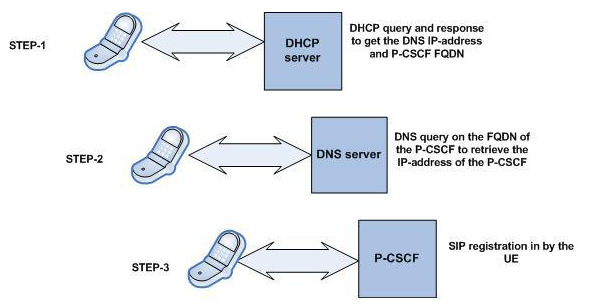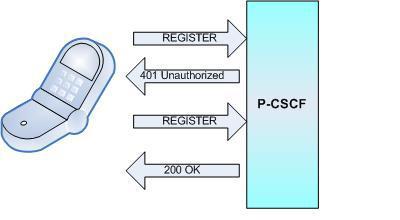The P-CSCF is the single point of contact in the control plane for an IMS, When the user User Equipment (UE) trying to make a call. All SIP messages sent by the UE must pass through the P-CSCF towards the other IMS elements. It can be located either in the visited network (in full IMS networks) or in the home network (when the visited network is not IMS compliant yet).
The UE attaches to the P-CSCF prior to performing IMS registrations and initiating SIP sessions.
For attachment to a given P-CSCF, the UE performs the P-CSCF discovery procedures. Attachment to the P-CSCF is necessary for the UE for initiating IMS registrations and sessions.

Before sending any Session Initiation Protocol (SIP) requests, the UE must perform “P-CSCF discovery”, the process of identifying (by address) the correct Proxy-Call Session Control function (P-CSCF). The P-CSCF address may be discovered in one of three different ways:
- It may be stored in the IP Multimedia Services Identity Module (ISIM).
- The UE may request it as part of the PDN connectivity request during the Attach process.
- The UE may request an IP address and fully Qualified domain Name (FQDN) from a DHCP server and then perform a DNS query on the returned IP address and FQDN.
In these procedures, the UE first establishes the IP connectivity access network (IP-CAN) bearer. Then, the UE sends a query to the DHCP server for retreiving the IP addresses and FQDN (Fully Qualified Domain Name) of the P-CSCF. After the DHCP query, the UE performs a DNS query on the FQDN received from the DHCP server. In response to the DNS query, the IP address of the P-CSCF is returned. This is known as the DHCP-DNS procedure for P-CSCF discovery. However, in some cases, it may be possible that the FQDN of the P-CSCF is pre-configured in the UE. In these scenarios, the UE can directly query the DNS server and get the IP address of the P-CSCF.

Subsequent to P-CSCF discovery, the UE can send a SIP REGISTER request to register itself in the IMS core network. The P-CSCF sets up IPSec security associations with the UE, which are facilitated with the two-way registration handshake (i.e. REGISTER-401-REGISTER-200 OK). The IPSec security assocaiations (SAs) setup four protected ports between the UE and the P-CSCF and ensure that all subsequent signaling traffic passes through the protected ports. The four protected ports negotiated during IMS registration are: The protected server port at the P-CSCF, the protected server port at the UE, the protected client port at the P-CSCF and the protected client port at the UE. The Protected client ports are used by the UE and P-CSCF to send requests while the server ports are used to receive incoming requests. IMS registration will be discussed seperately in another post.
The P-CSCF also translates the SDP body contained in the SIP INVITE message from the UE into DIAMETER over the Rx interface and sends it to the PCRF. The PCRF is responsible for policy control in the IMS core network. If the SDP offer contains a codec or any other media characteristics that are not allowed as per the policies of the IMS operator, the operator can choose to disallow that session setup.
